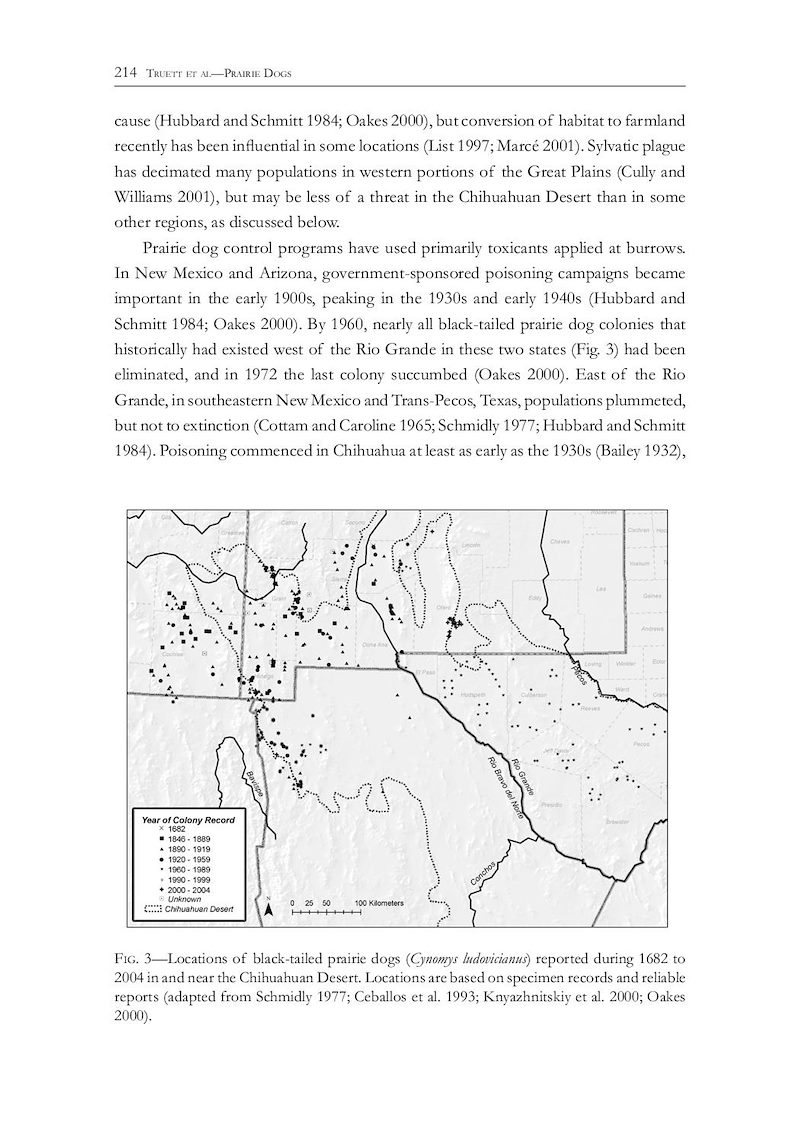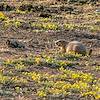
A great paper on the black-tailed-prairie dog. The focus is Chihuahuan Desert but with a broad range of black-tailed prairie dog information it interesting regardless of what region you are interested in.
Abstract from the paper:
The region we know as the Chihuahuan Desert has supported black-tailed prairie dogs (Cynomys ludovicianus) for at least 40,000 years, more widely in the late Pleistocene than since. In the past, prairie dog populations expanded and contracted with the abundance of large grazers, control efforts by people, episodes of sylvatic plague, and recently in some areas, habitat loss to agriculture. Chihuahuan Desert populations may be more sensitive than those elsewhere to human persecution and intensity of grazing, but the hot, dry climate may help insulate populations from sylvatic plague. With prudent management of livestock in rangelands, the Chihuahuan Desert may be as well or better suited than some other regions for long-term maintenance of prairie dog populations, albeit at lower densities, and associated species.
Truett, J.C., D.P. Gober, A.E. Ernst, R. List, H. Whitlaw, C.L. Hayes, G. Schmitt, and W.E. Van Pelt. 2014. Prairie dogs in the Chihuahuan Desert: History, ecology, conservation. In: C.A. Hoyt & J. Karges (editors). Proceedings of the Sixth Symposium on the Natural Resources of the Chihuahuan Desert Region. October 14–17. Chihuahuan Desert Research Institute, Fort Davis, TX. pp. 211–240.
Source: PDF - from the Symposium Proceedings page on the Chihuahuan Desert Research Institute's site.
